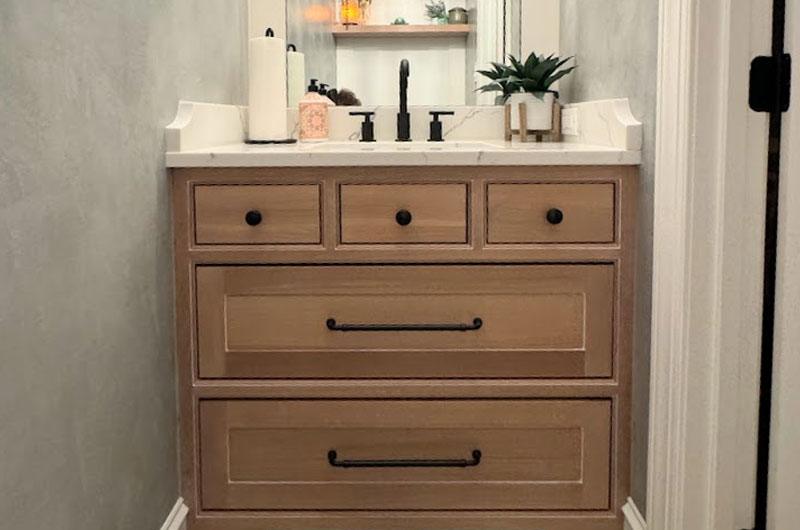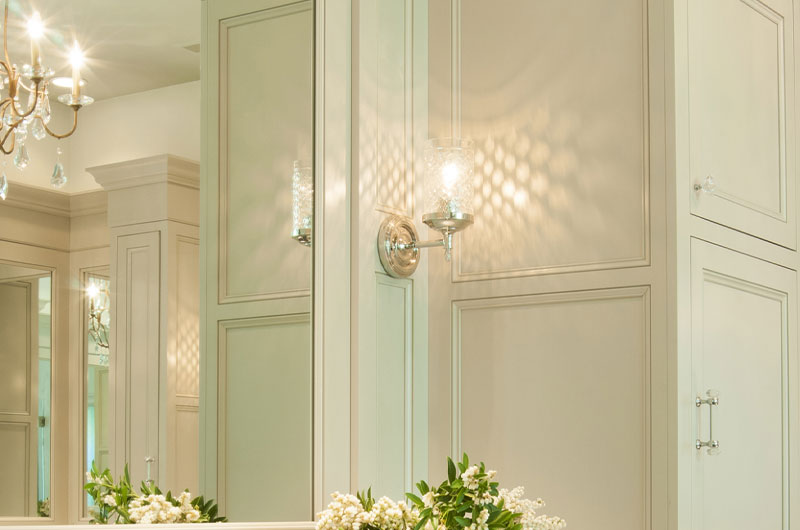What kind of finish should my wood cabinets have?
Now that you’ve narrowed down your choices of wood for your new cabinetry, it’s time to decide if you want to go with a wood stained finish, a painted finish, or even adding a glaze to your stained or painted finish. Once you visit our showroom, we help you narrow down the finishes and colors that fit your new cabinet design.

Wood Stains
Staining wood cabinet doors is a common finishing technique used to enhance the natural beauty of the wood while adding color and depth. Staining penetrates the wood fibers, highlighting the natural grain patterns and textures of the wood. This enhances the visual appeal of the cabinet doors, bringing out the inherent beauty and character of the wood.Staining also adds depth and dimension to the wood, creating a rich and lustrous finish that enhances the overall appearance of the cabinet doors. This depth can make the wood look more vibrant and dynamic, adding warmth and character to the space.

Paints
Painting wood cabinet doors is another common finishing technique that can dramatically transform the appearance of the cabinets. Whether you prefer classic white cabinets, bold colors, or subtle neutrals, paint provides a wide range of color options to match your desired aesthetic.Painting wood cabinet doors offers versatility in terms of color, finish, and style. You can choose from a variety of paint types, including matte, satin, semi-gloss, or high-gloss finishes, to achieve the desired look and feel for your cabinets. Additionally, you can add decorative elements such as distressing, glazing, or stenciling to customize the appearance further.

Glazes
- A glaze is a thin, translucent layer of color that is applied over the base coat of paint or stain on the cabinet door. When applied and then partially wiped away, the glaze settles into the recesses and crevices of the wood's grain, highlighting the natural texture and detail of the wood.
- By accentuating the contours and details of the wood, a glaze creates the illusion of depth and dimension on the cabinet door. This adds visual interest and complexity to the surface, making it appear richer and more dynamic.
- In addition to adding depth and detail, a glaze can also soften the overall appearance of the cabinet door. This is particularly effective when using a glaze with a lighter base coat, as it can create a soft, subtle sheen that adds warmth and elegance to the wood.

When it comes to finishing techniques, they vary between cabinet lines. In general, most cabinet lines will have an option for:
- Linen Finish: Primed and painted wood that is lightly hand-brushed with a gray or brown glaze creating a linear, brushed look. Usually will create a low-sheen finish.
- Rubbed Finish: Primed, painted wood is randomly sanded to reveal bare edges and high points, and then sealed with a clear top coat. Using a rubbed finish on a maple or cherry door with paint will allow the color of the cherry to show through where the areas are rubbed through.
- Distressed: There are many different levels of distressing. From rubbed off edges and corners, worm holes, stress cracks, dents, and smooth worn edges, the combination of your distressing it up to the look you want.

